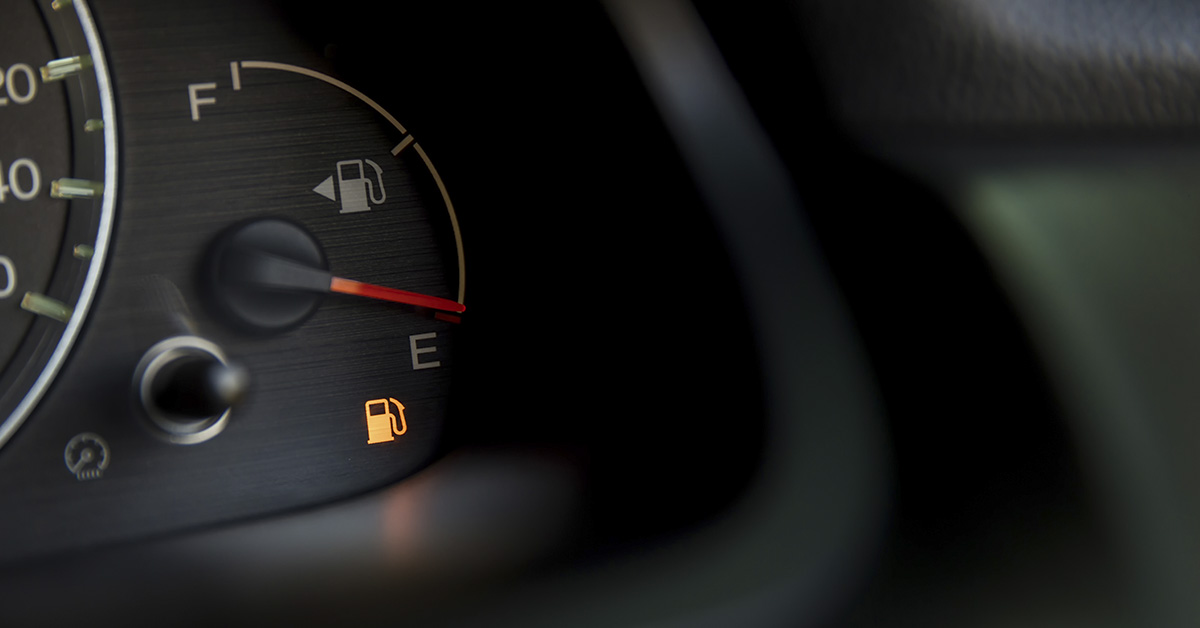You’re driving along, and suddenly, the dreaded gas light on your car’s dashboard illuminates. Your heart may skip a beat as you wonder just how far you can safely travel before you run out of fuel. The truth is, it depends on several factors, but we’re here to provide some general guidance.
Understanding Your Vehicle’s Leeway
The amount of distance you can cover after the gas light comes on can vary significantly from one vehicle to another. Research conducted by the U.S.-based website YourMechanic, which studied the owner’s manuals of the 50 top-selling automobiles in North America, offers valuable insights.1
For most vehicles, when that warning light appears, you typically have about 10 liters (2.6 U.S. gallons) of fuel left in your tank. This translates to an additional 90 to 130 kilometers (around 56 to 81 miles) you can travel before your car comes to a sputtering stop.
While some cars are quite generous with their leeway, others leave you with less wiggle room. For example, the Nissan Altima sedan can go as far as 185 kilometers (approximately 115 miles) after the light comes on, making it one of the more accommodating models. Meanwhile, the Chevrolet Silverado pickup has a smaller reserve, offering just about 40 kilometers (roughly 25 miles) before you find yourself stranded.
Factors Affecting Your Mileage After the Gas Light
Several factors influence how far you can safely drive after the gas light appears. These include the make and model of your car, your driving habits, regular gas mileage, and your driving conditions.2
Your driving style plays a crucial role. If you tend to put the pedal to the metal and accelerate aggressively, you’ll use up fuel more rapidly, meaning you may not reach the full estimated distance. On the other hand, careful and conservative driving can extend your journey beyond expectations.3
The state of your car and how well it’s maintained is another key consideration. Regular oil changes and maintenance can help maintain your vehicle’s fuel efficiency. However, if your car is in poor condition, your mileage may fall below the expected range.
The type of car you drive also plays a significant role. Smaller vehicles might cover about 20 to 30 miles, while larger vehicles can go up to 50 miles or more when the gas light comes on.
Your car’s age and condition also matter. Poorly maintained vehicles with lower fuel efficiency will run out of gas sooner when the tank is almost empty.
Environmental factors also come into play. Weather conditions can significantly affect your fuel economy. Cold weather, in particular, can lead to reduced mileage. Winter conditions, especially if your car’s gas light comes on, require you to act quickly and find a gas station to avoid any potential problems.

Understanding “N/A” and How Cars Calculate Mileage
You might have come across cars labeled “N/A” in the estimated mileage figures. This acronym stands for “Not Applicable.” According to Your Mechanic, in these cases, the estimated mileage is based on the car’s own distance-to-empty calculator. When the low-fuel light is triggered, it means the car’s system calculates that the remaining miles match the listed number. It’s essentially the vehicle’s own approximation. But all in all, you can expect to get anywhere from 30 miles to more than 100 miles on a nearly empty tank, the final figures are subject to various factors.
Consider Gassing Up
While driving after the gas light comes on can be tempting, it’s essential to exercise caution. Ignoring the warning can lead to severe consequences, including potential damage to your vehicle and safety risks. To stay on the safe side, make it a habit to keep your fuel gauge reading at least one-quarter full at all times, ensuring you don’t end up stranded on the side of the road.
Safety should always be a priority, so if the gas light does come on, avoid driving at high speeds and reduce strain on your car’s battery by turning off unnecessary electronics. Pull over safely and call for assistance if you can’t make it to the nearest gas station.
Remember, saving a few miles of driving with the gas light on is not worth the potential risks to your car’s health and your safety. The best way to ensure you’re not left in this predicament is to keep your gas tank well-filled and be mindful of your fuel levels when you hit the road.
Now that you’re armed with this knowledge, you can make informed decisions and drive with confidence, even when that gas light unexpectedly makes an appearance. Stay safe on the road and avoid the stress and potential damage of running on empty.
Sources
- “When the low-fuel warning light comes on, how much farther can you drive?” CAA Quebec
- “Here’s How Many Miles You Can Drive After the Gas Light Comes On.” RD. Jeff Bogle. August 17, 2023.
- “This Chart Reveals How Far You Can Drive Your Car on Empty.” Thrillist. Tony Merevick. September 12, 2016.
- Your Mechanic

